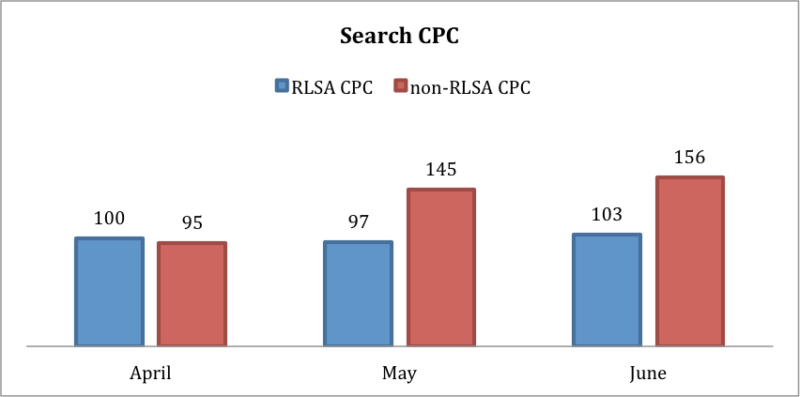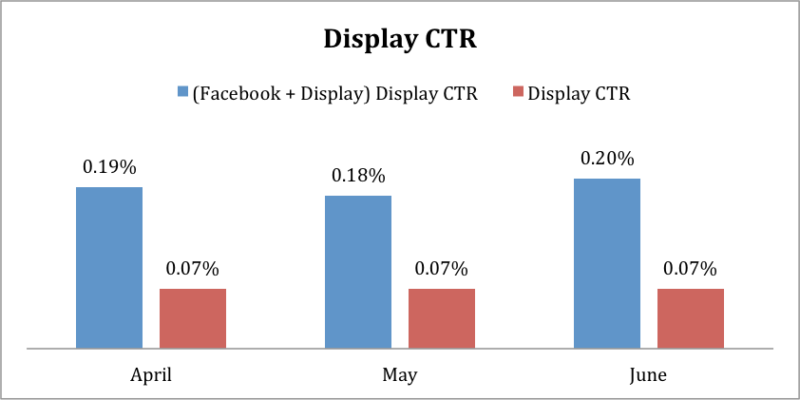Survey Reveals Google RLSA Performance Benchmarks & The Promise Of Cross-Channel Retargeting
Contributor Matt Ackley shares insights gleaned from a survey of 233 marketers about their retargeting practices and performance.

In 2013, Google released a research report on the customer path to purchase, showing how each channel played different roles at different times in taking the user from awareness, to consideration, to intent, and finally decision.
Google’s research reinforced the fragmented and complex journey customers take, and it’s safe to say things haven’t gotten simpler since then. In response, marketers have amped up the focus on reaching potential customers across different channels.
Retargeting, in particular, has become one of the key tactics du jour. And with the rising prevalence of Google Remarketing Lists for Search Ads (RLSA), marketers are starting to unearth some of the promise of cross-channel retargeting by including the most effective performance marketing channel — search — as part of their overall retargeting marketing mix.
However, we wanted to put some numbers to the anecdotal trends and stories we were hearing, which lead to a survey we recently conducted of 233 marketers to get a better idea of their retargeting practices.
Marketers Are Already Retargeting Across Channels
Based on our survey results, marketers are already overwhelmingly including retargeting as part of their toolset to re-engage users when they haven’t converted or purchased on their initial visits. Eight-eight percent (88%) of those surveyed said that retargeting was part of their marketing mix, and an additional 6% were planning to include it within the following 12-months.
Among survey respondents, display was the most popular channel for retargeting, while search (through Google RLSA), was a close second. Of those who responded, 44% said their retargeting campaigns were managed completely on AdWords.
Due to this feedback, it became clear that the Google AdWords and Google Display Network offerings make it easy for marketers to start retargeting on search and display, at least for staying within the Google universe.
How Do Marketers Define Search Marketing?
An interesting finding in our survey was that more marketers reported doing “search retargeting” than any other type of retargeting. This made us pause and ask, “What exactly are marketers considering as ‘search retargeting’?”
In the past, search retargeting has predominantly been referred to as a prospecting tool. The typical use case is a user visiting a search engine or a website, searching for a term, and then that user being retargeted by the advertiser based on that search query, even if the user hadn’t visited the advertiser’s website.
However, with Google, Bing, and other major search engines moving to secure search, the opportunities to retarget search queries have dwindled. Additionally, the mechanics of Google RLSA, which requires a user to visit an advertiser’s website to be added to a retargeting list, has likely changed how marketers think of “search retargeting.”
So based on the above survey results, how are marketers defining search retargeting?
- At a basic level, it’s site site-retargeting users on the search channel. For example, a user visits an advertiser’s website, is added to a retargeting list, and is then retargeted with search ads on Google based on their subsequent search queries.
- At a deeper level, it also involves using search intent data to create more granular audience segments to improve retargeting efforts across social and display. For example, a user could categorize a set of search queries under a dimension like “luxury” and use that to further segment audience lists based on site behavioral data.
Search, Social & Display Retargeting Performance Benchmarks
In addition to gaining a better understanding of marketers’ retargeting practices, we also wanted to get a grasp on how those retargeting campaigns were performing. Earlier in the year, Marin Software released its support for Google RLSA to the general public. This enabled us to capture a quarter’s worth of data on how our clients’ RLSA campaigns were performing.
The search retargeting data was compiled by taking a set of Marin Software users and comparing RLSA campaign performance versus non-RLSA performance within that set. Social and Display retargeting benchmark data was compiled by taking a set of high-spend Perfect Audience customers simultaneously performing Facebook-only retargeting, Display-only retargeting, and combined Facebook and Display retargeting.
Google RLSAs Drive Higher CTRs & Lower CPCs
We found that for Marin Software clients, Google RLSA campaigns had 2-3x higher click-through rates (CTRs) compared to non-RLSA campaigns. The retargeting campaigns’ higher performance isn’t surprising, but one of the more interesting trends we found was the increasing performance gap between RLSA and non-RLSA campaigns over the 3-month period.
There are a number of factors that could have contributed to this performance gain. Marketers could have improved their audience segmentation efforts by creating more targeted, actionable segments; they could have optimized budgets by increasing spend on the higher performing segments, and reducing spend on worse performing segments; or they could have refined their creative strategy and messaging to drive better results.
We’ll be keeping a close eye on performance data to see if these trends continue, but the early results amongst our client base are very promising and indicate that there are additional performance benefits to be gained as advertisers continue to identify new ways to leverage and optimize their RLSA campaigns.
Another interesting finding was that not only did RLSA campaigns have higher CTRs, but they did so while delivering those clicks at a lower cost-per-click (CPC) compared to non-RLSA campaigns.
Initially, this seems somewhat counterintuitive because the basic RLSA bidding strategy is to apply a bid boost to RLSA audiences. Intuitively, you’d expect RLSA CPCs to be higher since advertisers typically increase their maximum bids on those audiences.
However, there may be a couple of factors at work here driving down the CPC:
- The RLSA list is a much more targeted audience, so there could be less competition for those clicks. And because ads targeted at RLSA audiences get higher CTRs, it could help increase the quality score for those ads, leading to potentially higher placements at relatively lower costs.
- Additionally, because these data were pulled from a set of Marin Software clients, they may be reaping some of the benefits of the bidding algorithm, which allowed them to algorithmically optimize bids for their RLSA campaigns instead of applying a basic bid boost.
The basic takeaway, though, is that RLSA results have been delivering tremendous performance. Not only have advertisers driven better performance through higher CTR, they’ve done so while positively impacting the cost side of the equation as well by reducing CPCs.
Marketers Retargeting On Both Facebook And Display Enjoyed Better Performance
In a previous white paper, we looked at marketers running search and social (non-retargeting) campaigns and found a multiplier effect when marketers optimized those campaigns holistically.
When we looked at data of advertisers on the Perfect Audience platform, we found a similar effect when they were retargeting on both Facebook and Display, compared to only retargeting on one of the channels.
The data above shows that marketers who were simultaneously retargeting on Facebook and across the Web enjoyed higher clickthrough rates on Facebook compared to a cohort of similar marketers who were retargeting only on Facebook.
The findings were similar for marketers who simultaneously retargeted on both Facebook and the Web compared to similar marketers who were only retargeting on the Web. In this case, the performance gap for display retargeting was even higher than the performance gap for Facebook retargeting data above.
Scratching The Surface Of The Potential For Cross-Channel Retargeting
What’s going on here? There are a number of different potential possibilities. For example, increased ad exposure across multiple channels could improve brand awareness and trust. More pragmatically, repeated impressions could give the advertiser more opportunities to communicate their value proposition.
On the advertiser side, the additional data that come from retargeting across multiple channels could provide more signals for the marketer to help improve their ability to make better budgeting, targeting, and/or optimization decisions.
The reasons for the performance gains when retargeting across multiple channels likely involve a combination of the above reasons, as well as others we didn’t cover. However, the promise of cross-channel retargeting is quite apparent.
For more insight into our retargeting survey and performance data so stay tuned, you can check out our retargeting guide for performance marketers.
Contributing authors are invited to create content for Search Engine Land and are chosen for their expertise and contribution to the search community. Our contributors work under the oversight of the editorial staff and contributions are checked for quality and relevance to our readers. The opinions they express are their own.
Related stories
New on Search Engine Land





